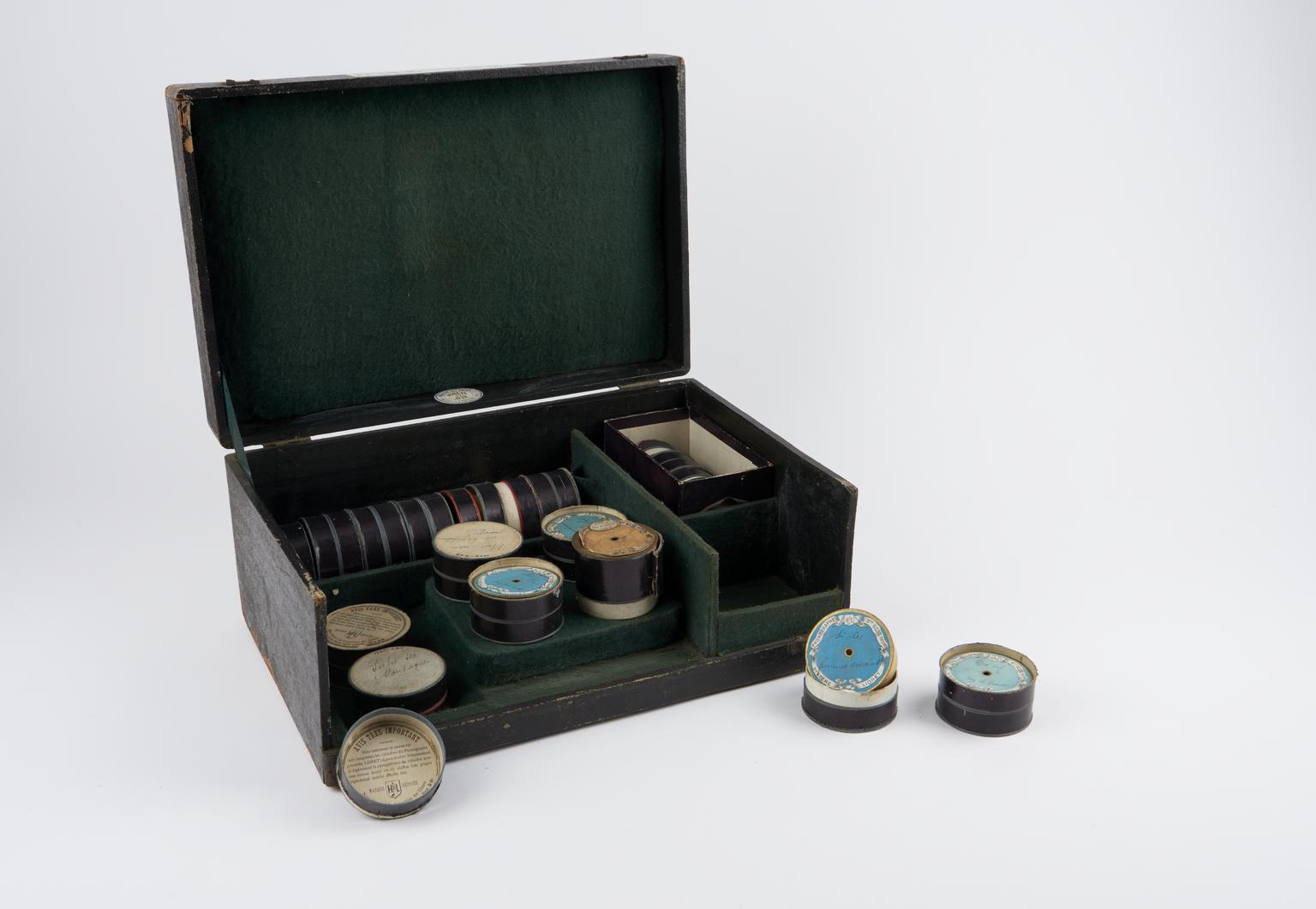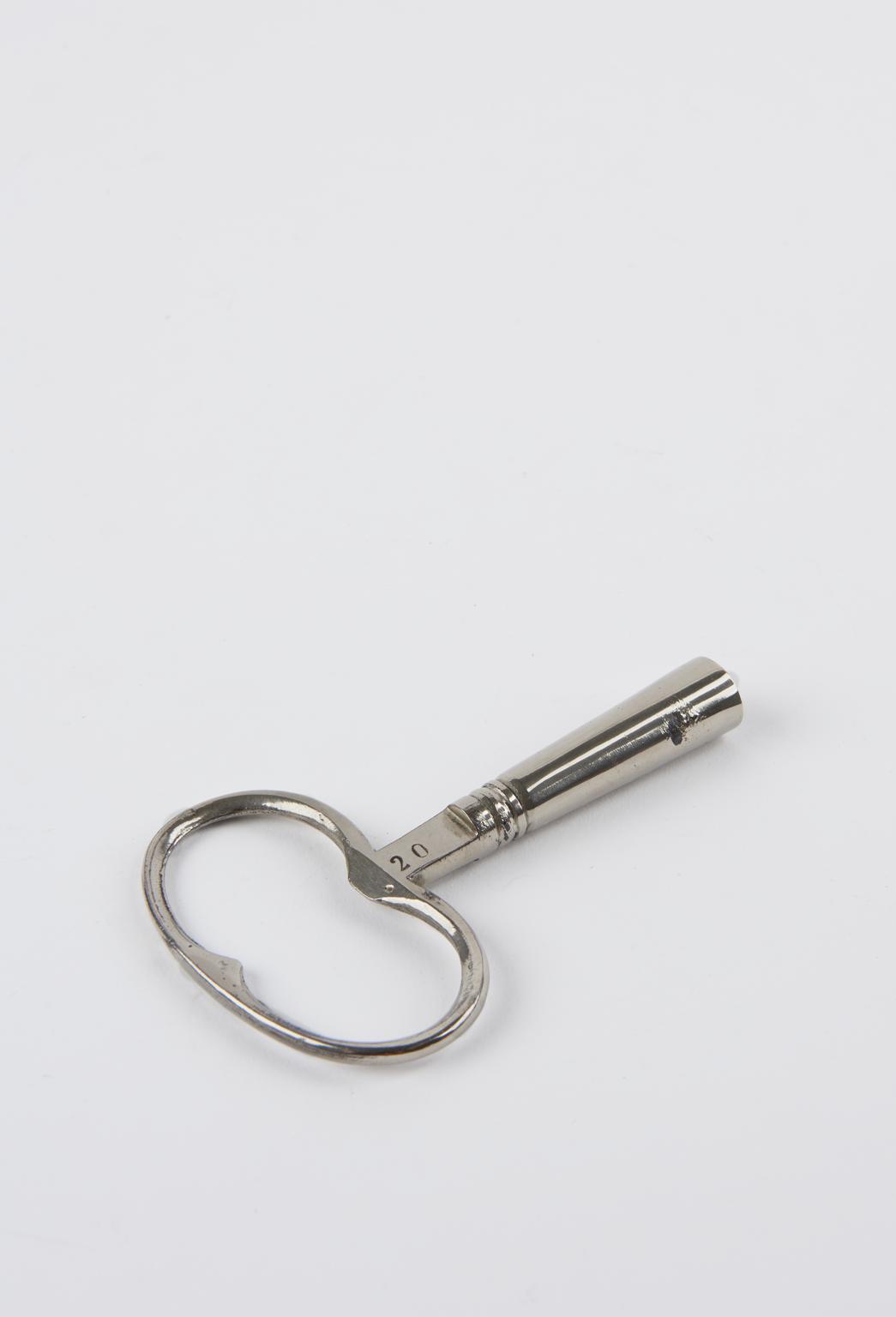
Case and records for Lioret spring motor driven phonograph No. 2
Case and records, orignially eighteen, from Lioret spring motor driven phonograph No. 2, invented by Henri Lioret, Paris, France, 1895 -1898
Lioret spring motor driven phonograph No. 2, with eighteen records, invented by Henri Lioret, Paris, France, 1895 -1898

Case and records, orignially eighteen, from Lioret spring motor driven phonograph No. 2, invented by Henri Lioret, Paris, France, 1895 -1898

Component of Lioret spring motor driven phonograph No. 2, with eighteen records, invented by Henri Lioret, Paris, France, 1895 -1898

Record, one of eighteen, from Lioret spring motor driven phonograph No. 2, invented by Henri Lioret, Paris, France, 1895 -1898

Central works of Lioret spring motor driven phonograph No. 2, invented by Henri Lioret, Paris, France, 1895 -1898
Henri Lioret (1848-1938) was a French clockmaker who devised an alternate version of Thomas Edison’s phonograph.
He was asked by French toy maker, Emile Jumeau, to create a cylinder player for an alternative to Edison’s talking dolls in the early 1890s. Henri created a mechanism that was ahead of its time, utilising celluloid for his cylinders years before Thomas Edison marketed celluloid cylinders in 1912. His celluloid cylinders were mounted on brass and could play 30 seconds of sound, with 17 different recordings available to play. The dolls were known as ‘Bébé Jumeau Phonographe’. Lioret was also the first to duplicate cylinders through moulding, rather than having to record directly onto individual cylinder.
Lioret moved away from clockmaking and into the phonograph market in 1895, creating a clockwork device that could play his cylinders outside of the talking dolls, which he called "Le Merveilleux”. The catalogue of available songs increased, with nearly 1400 titles available by 1899. Lioret introduced 5 cylinder varieties, including one in brown wax and one that could record up to 4 minutes of sound.

Celluloid horn of Lioret spring motor driven phonograph No. 2, invented by Henri Lioret, Paris, France, 1895 -1898

Key for Lioret spring motor driven phonograph No. 2, invented by Henri Lioret, Paris, France, 1895 -1898